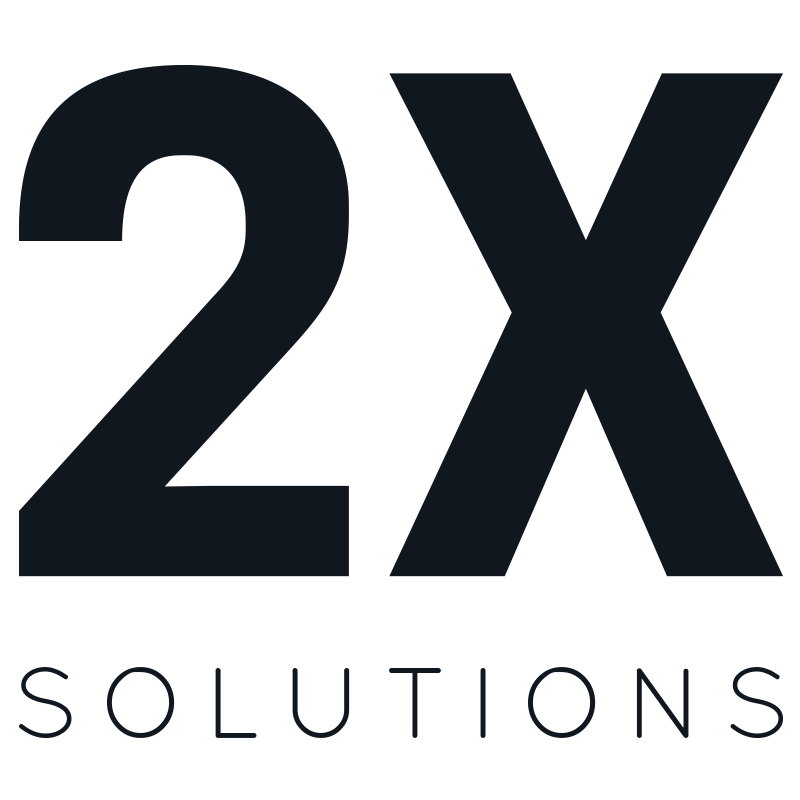A 2024 survey found that about 53% of U.S. business owners reported artificial intelligence as having a positive effect on the customer experience of their companies last year. It also found that about one-third of these business owners plan to use AI to strengthen their customer service operations and ensure quality assurance this year.
Many business owners have also started exploring conversational AI’s potential role in compliance matters. As natural language processing, or NLP, has improved, it has allowed businesses to apply AI-powered features like real-time monitoring and analysis to their employee/customer interactions. Business owners can now ensure their employees adhere to industry regulations while delivering superior customer service.
Gathering conversation intelligence from these customer interactions could become the key to your company providing top-tier quality assurance while keeping one eye on compliance-related issues. Discover more about the role of conversational AI in compliance below.
The Evolving Compliance Landscape for Conversational AI
The earliest examples of conversational AI emerged in the 1960s. At first, conversational AI could do little more than take part in very short interactions with humans. But by the 1980s, those in the business world began figuring out ways to incorporate conversational AI into the mix, and 40 years later, it’s now used to carry out countless tasks in everything from product development to customer service.
One task business owners ask conversational AI to take on these days is helping companies comply with the regulations specific to their industries. The role of conversational AI in compliance is set to become one of the most important functions it will fulfill in 2024. It’s also a role that is continuously evolving as business owners attempt to make the most of conversational AI’s ability to provide the necessary oversight when it comes to regulatory compliance and quality assurance.
Focus Areas
A recent Cato Institute report revealed that some U.S. companies are spending more on regulatory compliance than ever. The report suggested that the average company spends about 3.3% of its annual labor costs to ensure it complies with regulations.
Such statistics make it easy to see why many companies have turned to conversational AI for assistance as far as compliance is concerned. Looking ahead, the importance of conversational AI in compliance simply cannot be overstated.
More specifically, companies are focusing on using conversational AI to conduct real-time monitoring and analysis while their employees engage in customer interactions. Conversational AI can listen to these interactions as they occur and alert those in management positions if any employees say or do things that go against regulations. They can also alert them if employees break internal policies or don’t adhere to best practices while communicating with customers.
Emerging Regulations
At the beginning of 2023, only about 6% of the chief financial officers in the U.S. listed government regulations as the largest risk for their companies. At that time, most CFOs pointed to inflation as the single biggest risk that kept them up at night.
However, as of late 2023, 40% of CFOs have begun to admit that government regulations are now the largest risk for their companies. Many of these regulations flew under the radar throughout the pandemic, but they’re back in a big way, causing CFOs to lose sleep.
This shift in awareness further explains the importance of the role of conversational AI in compliance. More companies are relying on conversational AI to ensure they’re in constant compliance with the regulations the government has created for their industries.
Risk Management With Conversational AI

Running a company will always come with risks, no matter how big or small they might be. Legal risk, operational risk, and security risk are a few different kinds of risks that business owners must manage at any given moment. But if you look at any list of the top business risks, you’ll find compliance risk somewhere near the top of it.
If a company doesn’t comply with regulations, it could result in a business owner paying big fines. It could also hurt a company’s reputation and subject it to further scrutiny from regulators in the future.
Before it reaches this point, business owners should embrace the role of conversational AI in compliance by learning how it can help them with risk management. Next, let’s examine how conversational AI can assist companies in this department.
Proactive Risk Identification
If a business owner only has a few employees to look after, they might not have too difficult of a time identifying risks that could lead to compliance issues. However, suppose a business owner has a large team of employees who must abide by different regulations at work. In that case, identifying risks can be tricky and lead to compliance concerns at every turn.
Conversational AI gives business owners the tools they need to identify risks proactively. Each time an employee speaks with a customer, conversational AI can monitor their conversations while they’re happening and analyze the words an employee uses to pinpoint possible compliance issues. These are issues that might go undetected otherwise and cause a company to face penalties for not complying with the appropriate regulations.
Conversational AI can prevent a company from finding itself in a position where it doesn’t find out about compliance concerns until it’s too late. It sets a business owner up with the information they need to stop these concerns from spiraling out of control and creating serious problems for the company.
Mitigating Compliance Risks
A recent Training Magazine report pointed out that many businesses spend hundreds of thousands and sometimes even millions of dollars on mandatory compliance training for employees each year. Companies must continue to shell out this kind of money to ensure their employees know the regulations they must comply with at all times. However, encouraging these employees to avoid compliance risks shouldn’t end there.
The role of conversational AI in compliance extends beyond this point and pushes companies to train their employees further when it comes to complying with regulations. Once conversational AI alerts business owners and others in management positions to employees who aren’t staying in compliance, they can use these real-world examples to provide training tips to their employees. It helps mitigate compliance risks all year and not just after employees have gone through compliance training courses.
Ensuring Transparency in Conversational AI
While the role of conversational AI in compliance is already important and growing even more important by the day, companies who choose to take advantage of it shouldn’t overlook the significance of transparency. If a business owner decides to use conversational AI but isn’t transparent enough with customers, it could do more harm than good in some cases.
Companies that move forward with virtual assistants and other conversational AI tools should aim to provide total transparency to customers, even if it means ruffling a few feathers along the way. It’s better for them to remain transparent about using an AI assistant rather than having customers find out about them doing it later without their knowledge.
User Consent and Data Practices
A company can’t put transparent conversational AI practices into place without coming up with a reliable way to inform customers about them so that they can obtain their consent. Neglecting to get customers’ consent is almost guaranteed to come back to bite a company if they aren’t careful.
Many companies secure user consent when using conversation AI by having their employees ask their customers whether they’re OK with their conversations being recorded and monitored by AI. Others do it by playing short messages for customers when they first call companies about how they use AI to deliver better customer service.
Companies must also put together the best data practices to make their customers feel comfortable with the idea of sharing personal data with conversational AI. These customers might not take a liking to having their data collected by AI if they’re unsure about the data security it can provide.
The goal of all companies that embrace the role of conversational AI in compliance should be to put people’s minds at ease when they hear that AI products and services are being used.
Explainability of AI Decisions
Conversational AI might help businesses in a big way. However, recent surveys still suggest that the average American is scared of AI and the possibilities that come with using it. In fact, one survey showed that 80% of people in the U.S. worry about getting scammed by AI in some way.
One reason for this is that, in the past, AI has shown a knack for making important decisions based on the information it receives without explaining its decisions and letting humans know why it reacted to a certain scenario in the way that it did. It’s another hurdle business owners must clear when incorporating conversational AI into their operations.
The good news is that many modern-day conversational AI platforms are advanced enough to provide reasons for why they chose to make certain decisions. They’re also advanced enough to admit when they might provide answers that aren’t 100% correct. It further helps build trust between customers and the companies that count on AI to make decisions on their behalf.
Quality Assurance Through Conversation Monitoring

During any given month, over 60% of Americans will reach out to the customer service departments for companies to ask a question or voice a complaint. If these people aren’t treated to a top-notch customer service interaction, it can ruin their customer experiences. Companies must avoid this at all costs since it can take a toll on their reputations and even begin to impact their sales.
A business owner can ensure quality assurance by utilizing conversational AI to monitor each and every interaction that an employee has with a customer. Conversational AI can engage in real-time monitoring and analysis during a call between an employee and a customer and highlight any instances in which an employee could have done a better job connecting with a customer and assisting them.
Conversation Analysis Techniques
In past years, many companies had those in management positions listen in on their employees’ calls to ensure they were having productive conversations with customers. They also monitored these calls manually to see to it that employees weren’t saying or doing anything that went against internal policies and best practices.
In 2024, these companies don’t have to try to keep tabs on all the customer interactions in which their employees participate. Instead, they can invest in conversational AI that can monitor calls, create transcripts for them, and allow management teams to focus on analyzing employee/customer interactions and improving them.
This is a more effective option for companies since it lets them show employees exactly what they’re saying or doing wrong while speaking with customers. It also allows them to develop the right techniques for their employees so that they can take part in more productive conversations with customers from now on.
Identifying Bias in Interactions
Whether they realize it or not, the employees at many companies might show bias and even discrimination toward customers when speaking with them during customer service interactions. A 2021 Harvard Business Review study took a deep dive into the unconscious bias that sometimes exists within the business world and conducted a real-world experiment as part of this process.
During this experiment, researchers reached out to hotel representatives and asked for assistance while using white-sounding, Black-sounding, and Asian-sounding names. They found that almost one-third of those with white-sounding names were able to convince hotel representatives to stay on the phone and go the extra mile while providing customer service. Meanwhile, only 16% of those with Black-sounding names and 4% of those with Asian-sounding names received the same treatment.
Conversational AI could help a company steer clear of demonstrating this kind of bias during customer interactions. It can analyze these interactions and note if bias is ever used while employees and customers talk. Many employees and some customers might not even pick up on the unconscious bias being shown, and by pointing it out, conversational AI can change how employees behave toward customers.
Human-in-the-loop QA for Regulatory Adherence
Every company is slightly different and takes a unique approach to quality assurance and customer service. Each company also has its own set of rules and regulations it must abide by while doing business to avoid penalties.
With these aspects in mind, so-called human-in-the-loop QA can make conversational AI more impactful. This system tailors a company’s AI platform to the business using it and the regulations it must adhere to each day.
Roles and Responsibilities
Some companies invest in conversational AI without welcoming their employees into the conversation and allowing them to play a part in its development. Human-in-the-loop QA is different in that it calls for employees to collaborate with AI to make it smarter and a much stronger tool overall.
With human-in-the-loop QA, the employees at a company can set up a conversational AI platform for success by teaching it industry-specific regulations and terms it might need to know to take better notes while analyzing calls in real-time. This could make conversational AI even more effective and enable those who rely on it to maximize —and even expand — the potential of its abilities.
Continuous Improvement Through Review
The beauty of conversational AI is that it isn’t ever a finished product. Conversational AI tools are always working to take in new information to provide better feedback when tasked with monitoring and analyzing employee/customer interactions.
Human-in-the-loop QA can open feedback loops that will allow employees to make suggestions to a conversational AI platform so that they can play a role in improving it. It can also allow companies to perform routine AI audits so they can point out any biases or errors that conversational AI might display.
The Importance of Explainable AI (XAI) for Compliance

Explainable AI, or XAI for short, hasn’t been around as long as conversational AI. It didn’t appear on the AI scene until the 1980s, but it has quickly grown into an important AI tool.
Explainable AI does more than just interact with humans and provide them with the information it thinks they want. It also helps explain why it’s responding in the way that it is to help humans understand where it’s coming from. By doing this, explainable AI bridges the gap between AI and human users while creating a stronger sense of trust.
Explainable AI can also come in handy for companies with compliance concerns. It can address them before they transform into bigger problems and cause those companies to face severe penalties.
Understanding AI Decision-Making
AI doesn’t pull the answers it provides to people out of thin air. It carefully curates answers based on information it has been provided with in the past and questions people have asked it over time.
AI is also essentially a living thing that is always growing smarter as it gains more knowledge of what’s happening around it. All these things help AI make more informed decisions when the time comes.
Therefore, companies can train AI models to find compliance issues and make decisions accordingly when they do. They can also ensure that employees know why AI is making decisions on compliance-related problems so that they’re more likely to heed warnings from AI about regulatory issues.
Mitigating Bias with XAI
Many humans have a hard time eliminating unintended bias from their thoughts and speech patterns. They can try to do it by giving themselves more time to make decisions or using techniques like perspective-taking to become more empathetic. But it can take months, if not years, for humans to break these habits for good.
Explainable AI doesn’t have to go through this same painstaking process. Companies can train XAI to mitigate bias so it doesn’t add to any quality assurance or compliance issues.
Choosing a Compliant Conversational AI Solution
Could conversational AI work well as a solution for your company? Many American businesses are embracing the role of conversational AI in compliance and letting it lead them down the right path to more confidently adhere to industry-specific regulations.
Your company should consider doing this, too, but first, you must select the right conversational AI solution for your compliance concerns. Get some guidelines on how to do it here.
Criteria for Selecting AI Vendors and Solutions
AI startups are a dime a dozen in the U.S. right now. A New York Times report showed that about half of the $56 billion that startups raised from April through June 2024 was earmarked for AI-based companies.
Because of this, you might struggle to track down the right AI vendors and solutions. Here are the most important criteria to keep in mind when comparing your options:
- Experience
- Cost
- Scalability
- Support
- Privacy
- Regulatory compliance
If you choose the wrong AI vendor or AI solution, you may regret investing in AI products and services in the first place. Search for the right vendor and the right solution so you can fully wrap your arms around the importance of the role of conversational AI in compliance.
Overview of 2X Solutions’ Services for Ensuring Compliance and Quality
At 2X Solutions, we’ve been providing businesses with high-quality AI solutions since 2018. Our conversational AI platform can give your company and its employees the chance to take advantage of our AI services that can set you up with:
- Real-Time Compliance Monitoring
- Seamless Recording and Documentation
- Continuous Learning
- Improved Customer Satisfaction and Loyalty
- Streamlined Lead Qualification
Our services can also continue to help your company as it grows by making refinements to its compliance framework. It’ll ensure your business is compliant even as regulations change in the future.
Contact Us To Embrace the Role of Conversational AI in Compliance
Now that you have a better understanding of the role of conversational AI in compliance, are you interested in incorporating the AI services available through 2X Solutions into your operation? Give us a call to see how our AI services can help you avoid unnecessary compliance concerns by adhering to your industry’s regulations.






